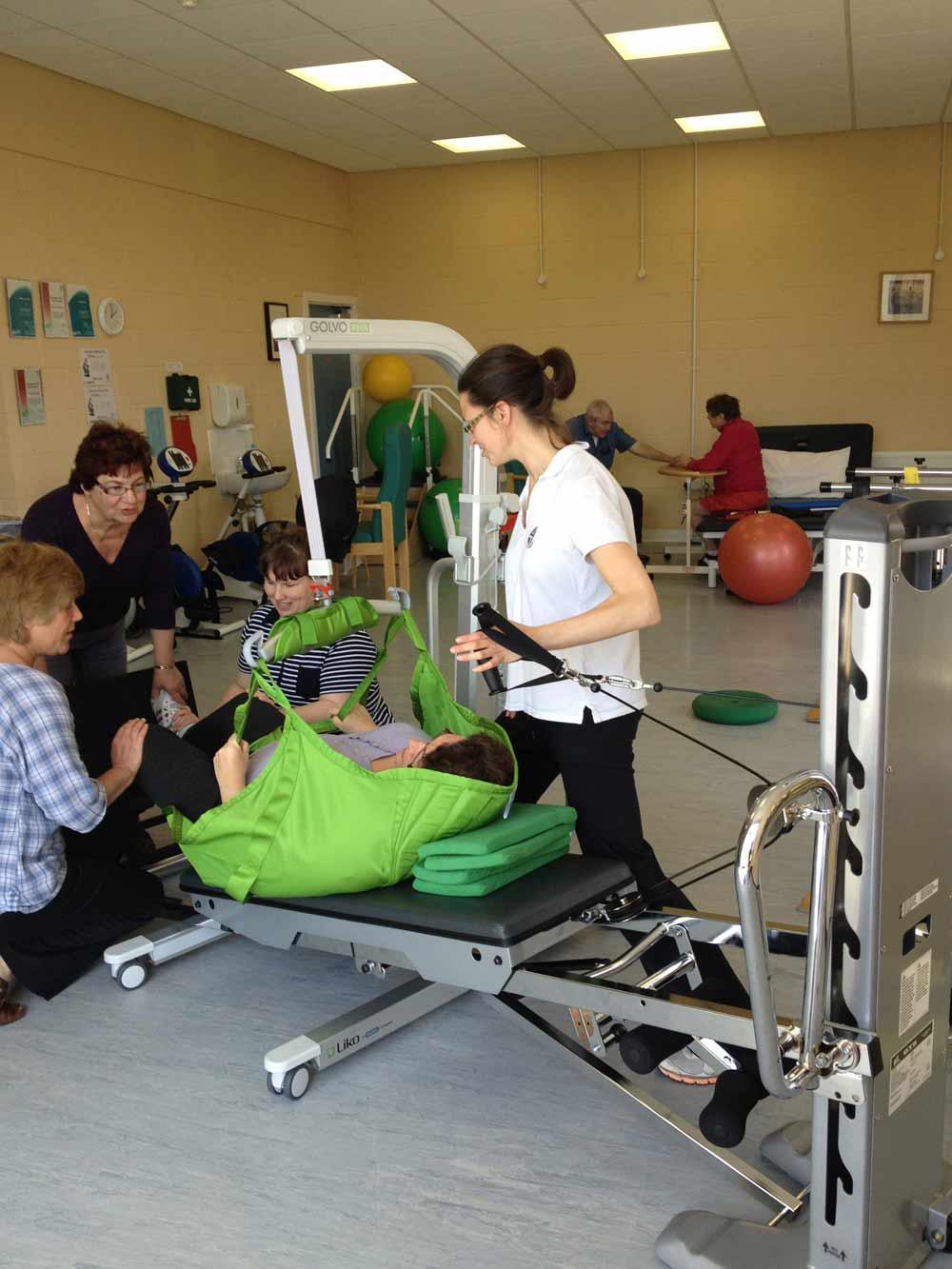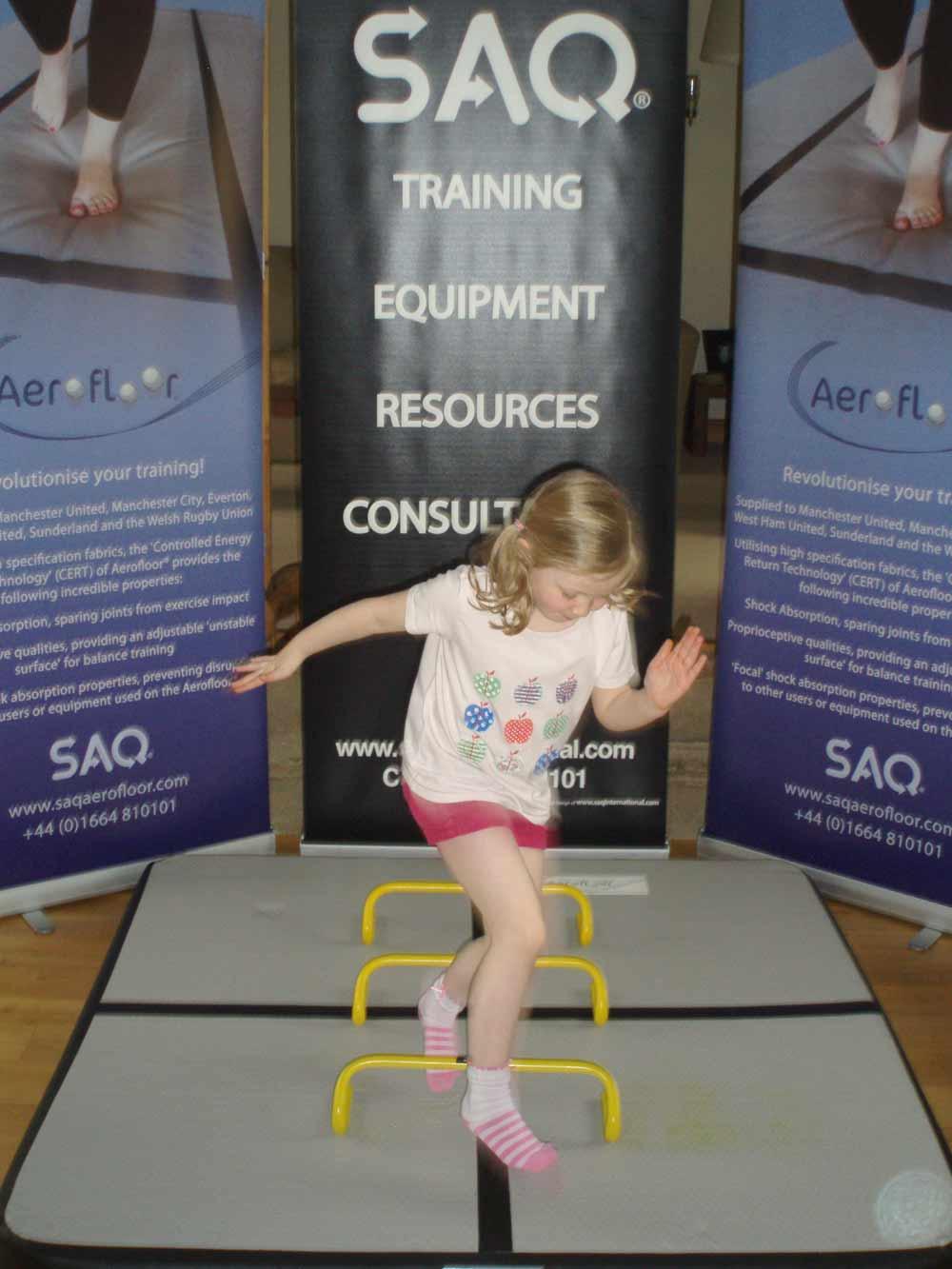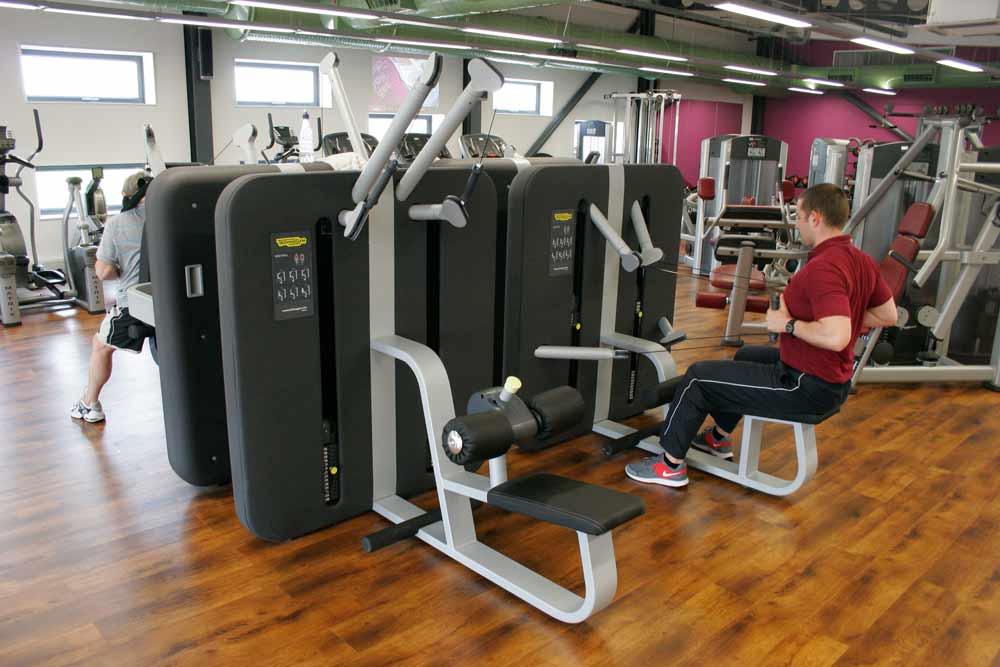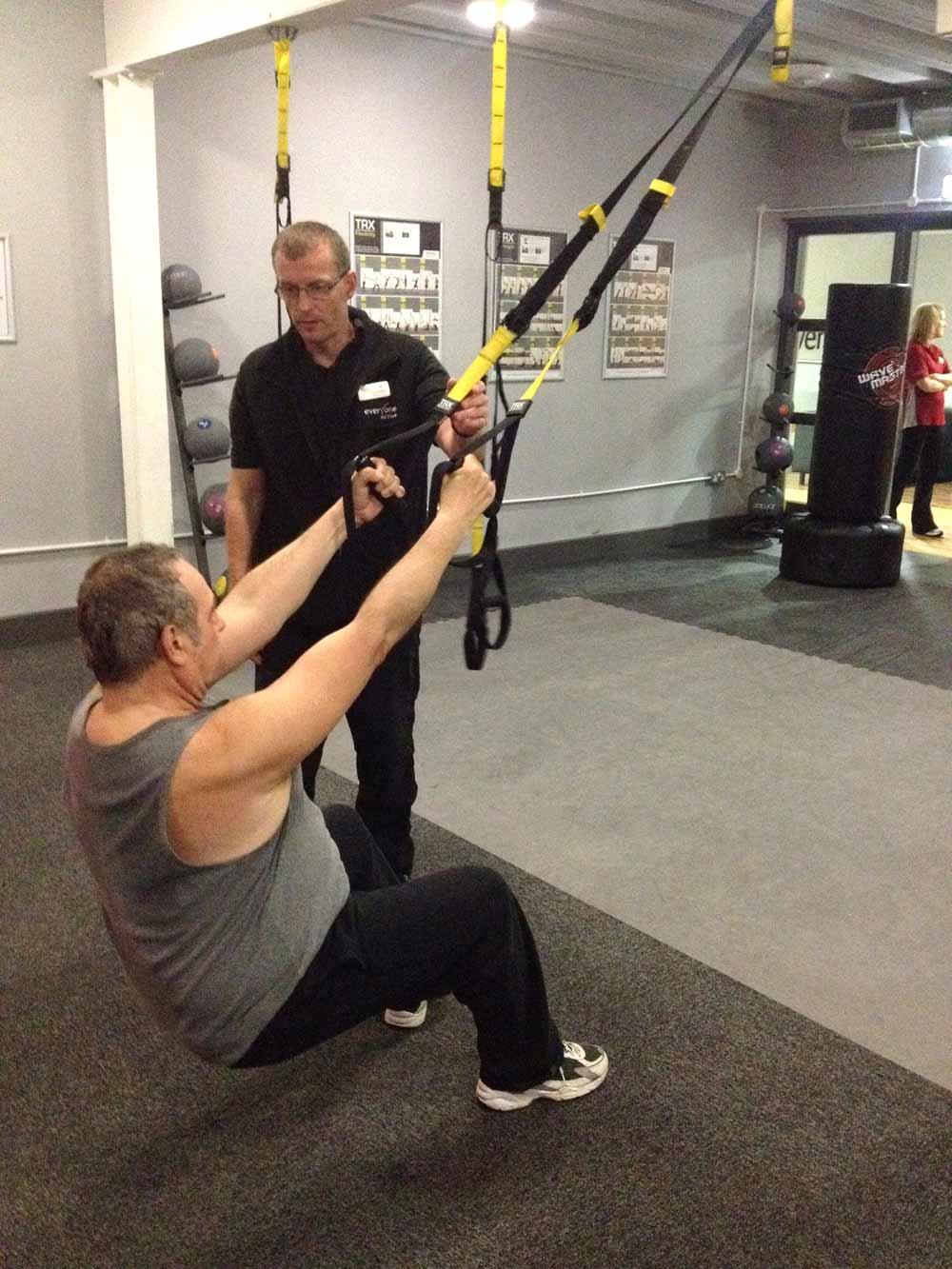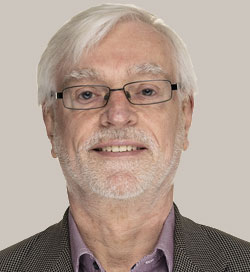For the uninitiated, functional training zones can appear to be playgrounds for the fitter member, with balls, pulleys and mysterious-looking equipment. The kit isn’t as intuitive as an exercise bike or rower, so is in danger of being bypassed by the self-conscious gym user.
Of course, this doesn’t need to be the case. With their focus on training the body to cope with everyday movements, functional zones are perfect for all types of special population user groups.
At present, suppliers are not generally positioning their equipment with special populations in mind – neither are many operators using it to cater for this market. Nonetheless, the following case studies show how powerful functional training areas can be in impacting the strength and fitness of elderly people, children, those with limited mobility, illnesses and weight issues.
MULTIPLE SCLEROSIS
The Merlin MS Centre in Cornwall, which treats people with multiple sclerosis and other neurological conditions, uses GRAVITY training on Total Gym equipment to instigate muscle reaction, turn on core muscles and train functional movements.
The variable resistance of Total Gym equipment enables those with limited muscle control to work with as little as one per cent of their body weight, so strength can be maintained for as long as possible in the face of the degenerative effects of MS.
Confinement to a wheelchair compounds muscle degeneration symptoms, as patients cannot engage their lower limbs, but exercising in a low resistance environment allows patients to use their muscles again: GRAVITY training allows for hundreds of different movements to target specific areas. Dynamic squats on the Total Gym equipment have even enabled some patients to regain enough muscle strength to transfer to and from their wheelchairs unaided.
Exercise therapists at the centre have Level 4 qualifications in exercise therapy, postural stability and fall prevention. GRAVITY training is also required to use the Total Gym equipment and apply the method to the special population.
“Treating the physical symptoms of neurological conditions is easy once the physiological and medical effects of the condition are understood,” says Helen Tite, exercise therapist at the Merlin MS Centre. “Balance is often lost due to these conditions, but also as a result of medication. If you understand and consider the symptoms when devising a programme, the physical issues that can be treated with exercise are the same as for any able-bodied person.”
CHILDREN
SAQ International is currently running a number of pilot projects with independent organisations, children’s centres, nurseries and school-based Special Educational Needs teams to assess the effectiveness of Aerofloor – SAQ’s new air-filled functional training mat – in children’s health.
The Aerofloor programme provides a platform for children to perform a range of functional movements, reducing impact on their joints while at the same time increasing the cardiovascular response: the reduced impact, even when bouncing as on a trampoline, means they can keep going for longer.
Results from the pilot study have shown that children following a structured programme improve and maintain their core stability and balance, bilateral integration skills and stamina. Improvements have also been noted in concentration, body control, proprioception and reading and writing.
A nationally recognised award (NCFE, REPS, Active IQ) has been designed to train staff on the science and use of the programme. “We have been in contact with and consulted major health club chains which currently run programmes for children and young adults,” says SAQ International’s managing director Alan Pearson. “The Aerofloor has a natural fit within these programmes and has the ability to add fun, excitement and increase membership.”
LIMITED MOBILITY
Hereford Leisure Pool, part of Halo Leisure Trust, is using Technogym’s Kinesis Stations as a key element in its Lifestyle Improvements for Today programme (LIFT), which is part of Herefordshire’s long-running exercise referral scheme.
The centre has found that Kinesis Stations have improved the accessibility of the gym – thanks to the machines’ ease of control and the fact that movements are not fixed – meaning it can now offer targeted exercise programmes for special population groups, including wheelchair users.
“Many people believe strength training is the domain of big, beefy men,” says centre manager Simon Gwynne. “We wanted a solution to demonstrate how strength exercise gives great results to those new to exercise, older clients and people who have been referred by their GP to increase physical activity.”
Popular exercises on the Kinesis Stations include the core rotation, as this is good for those with restricted movement, with both the range and the speed of the exercise able to be steadily increased. The low row, meanwhile, improves posture and arm strength, with clients able to start with low weights.
Natural movements that mirror the activities of daily life are important, and the Kinesis Stations Step/Squat station can be used to replicate movements such as lifting shopping bags and walking up steps. To begin with, it can be used without the cable – which adds resistance – with users also able to hold the support arm if required. As a progression, resistance can be introduced in low intervals.
“Many customers come from other Halo sites to use Kinesis,” says Gwynne. “I think the biggest rewards we are seeing are the customers with walking aids, and OAPs with limited abilities and compromised ranges of movement, being able to access the stations with ease. We currently have five new wheelchair users on the GP scheme using Kinesis.”
Staff need to be at least Level 3 on the REPs register for the Halo GP referral scheme, and trained in fall prevention.
SEVERELY DECONDITIONED
TRX has been successfully used at Fareham Leisure Centre – operated by Everyone Active – to bring overweight and obese patients into exercise via a GP referral scheme.
TRX allows progression of simple movements over the 10-week programme, starting with exercises such as assisted squats and chest presses. “The kit is easy to use and easy to understand, so it’s well suited to people who haven’t exercised for a long time,” says Cathie Bolwell, exercise referral manager at the centre. “Not only that, but deconditioned people often feel self-conscious when they’re new to the gym – the functional zone allows them to build confidence in a quieter space.”
The programme, which has been running since January 2008, sees a healthy conversion rate of participants to members: 67 per cent complete the 10-week programme and the centre has 160 members who joined after their GP referral scheme. In 2011/12, 14 per cent of referrals became members.
One of those members, Ted Azulay, has cut down his insulin and blood pressure medication as a result of exercise. Among the functional training exercises he did as part of his programme were assisted single squats to increase core engagement, balance work, and whole body movements – such as a woodchop – to awaken core muscles. The chest press was also used, as a simple move that’s easy to progress as strength and fitness improves.
“Eighteen months ago I weighed 18.5 stone and had a 48-inch waist,” says Azulay. “Now I’m 13.5 stone and my waist is 36 inches. I started slowly, doing exercise referral classes, but now do many different classes.”
All staff working on the GP referral scheme are Level 3 qualified and have completed TRX training.
THE ELDERLY
Through its GP referral scheme, North Country Leisure in Penrith is targeting elderly people with psychological and physical illnesses.
Life Fitness’ functional training rig, the SYNRGY360s, is central to the programme, as it combines total body dynamic exercises that can be modified to the user’s ability. A large percentage of these exercises are also relevant to everyday life, and the instructor adapts exercises to stay within each client’s recommended exercise range.
SYNRGY360s’ step platform can be adjusted in height for step-up exercises to develop strength and elevate the heart rate, while the rebounder allows people to do a range of exercises, including simple throw-and-catch activities to develop the core – ideal for those who need a low-level option. The TRX and resistance bands, meanwhile, allow for simple bodyweight exercises, with the individual able to adjust the resistance to a suitable level.
The GP referral programmes at North Country Leisure use SYNRGY360s in conjunction with other gym kit. “The SYNRGY360s allows us to offer a range of alternative exercises which are functional, and which help us keep the individual’s programme interesting and challenging,” says club manager Tim Bestford.
The programme has seen good results, with some patients able to reduce medication and improve their ability to perform day-to-day tasks. Some have even been able to leave the scheme and join as regular members. Plans are now underway to devise programmes for children and young people, which will also use the SYNRGY360s.
All of the team working on the programme are qualified to at least Level 3 and were specifically trained for the SYNRGY360s by Life Fitness Academy master trainers. The team is also trained in GP referral and cardiac rehabilitation.








